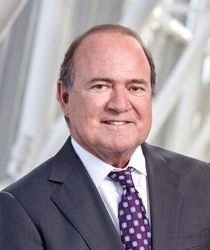Retirement Plan Enhancements On The Way
For many months Congress has been working on retirement savings enhancements that expand and build on the SECURE Act of 2019. Although multiple proposals are being discussed, which include SECURE Act 2.0, the RISE & SHINE Act and the EARN Act, I will refer to the bills collectively as the SECURE Act 2.0. The SECURE Act 2.0 has bipartisan support and one version has passed the House of Representatives. The Senate is working on its own version. However, there is significant commonality between the House and Senate versions.
Due to the timing of this article, the below summary is subject to modifications that may be reflected in the ultimate SECURE Act 2.0 which will likely pass Congress and be signed into law this year. This discussion describes the more significant proposals and is not all inclusive of the proposals being discussed in Congress.
Required Minimum Distributions
Under the SECURE Act of 2019, the minimum distribution age was changed from age 70½ to age 72. This change is applicable to anyone who turns age 70½ after 2019. The SECURE Act 2.0 proposes to increase the minimum distribution age as follows:
- 73 for those turning 72 after December 31, 2022 but before January 1, 2030
- 74 for those turning 73 after December 31, 2029 but before January 1, 2033.
- 75 for those turning 74 after December 31, 2032 and beyond.
In addition to the changes to the minimum distribution age, the SECURE Act 2.0 reduces the excise tax on a failure to take a required minimum distribution from 50% to 25% (or 10% if corrected by the end of the second year following the year the tax is imposed).
Catch-Up Contributions
Currently, plan participants may make catch-up contributions up to $6,500 in any year in which they attain age 50 or more. Effective for plan years beginning after December 31, 2022, catch-up contributions must be after-tax Roth contributions. In addition, employees age 62-64 (or 60-63 under the EARN Act) may contribute up to $10,000, indexed for inflation, as catch-up contributions.
Long-Term, Part-Time Employees
The SECURE Act of 2019 requires that part-time employees with 500 hours or more of service (but less than 1,000 hours of service) for three consecutive years must be eligible to participate in their company’s 401(k) plan. Effective for plan years beginning after December 31, 2022 or one year after the date of final regulations, the SECURE Act 2.0 reduces the three year requirement to two years.
Auto-Enrollment and Increase
Based on the proposals, new 401(k) plans would generally be required to provide for automatic enrollment and deferral increases as follows:
- The automatic deferral rate may be 3% - 10% with participants having the option to withdraw the contribution within 90 days.
- Unless a participant opts out, contribution rates will increase by 1% each year up to 10%-15%.
- Default or automatic enrollment contributions must be invested in a qualified default investment alternative.
The automatic enrollment and increase requirement for new plans would be effective for plan years beginning after December 31, 2024.
Student Loan Repayment Match
Effective for plan years beginning after December 31, 2022, or 2023 under the EARN Act, employers can make matching contributions on participant student loan payments up to the 401(k) contribution limit. The nondiscrimination testing rules would permit separate testing for the contributions based on student loan repayments.
Distribution Provisions
The SECURE Act 2.0 would expand the availability of plan distributions as follows:
- Birth or adoption withdrawals, which are permitted under the SECURE Act of 2019, can be repaid within three years of the withdrawal.
- Victims of domestic abuse may withdraw up to $10,000 or 50% of their account without incurring the 10% early distribution tax and may repay such withdrawal within three years.
- Plans could distribute up to $2,500 for long-term care premiums without imposition of the early withdrawal excise tax.
- Distributions to terminally ill participants would not be subject to the 10% early withdrawal excise tax.
- Up to $22,000 may be distributed from plans or IRAs if the participant or IRA owner is affected by a declared disaster. The 10% early withdrawal penalty would not apply and income would be recognized over three years. The participant would have the option to recontribute the distribution to the plan.
In addition to the above, effective for plan years beginning after December 31, 2022, the cash out limit for distributions without participant consent would be increased from $5,000 to $7,000.
Congress continues to support enhanced retirement savings, as demonstrated by the above highlights of the proposed SECURE Act 2.0. The above proposals are being met with popularity and, although it is uncertain what will be in the final law, it is likely that the above provisions will be included in the same or similar form.

